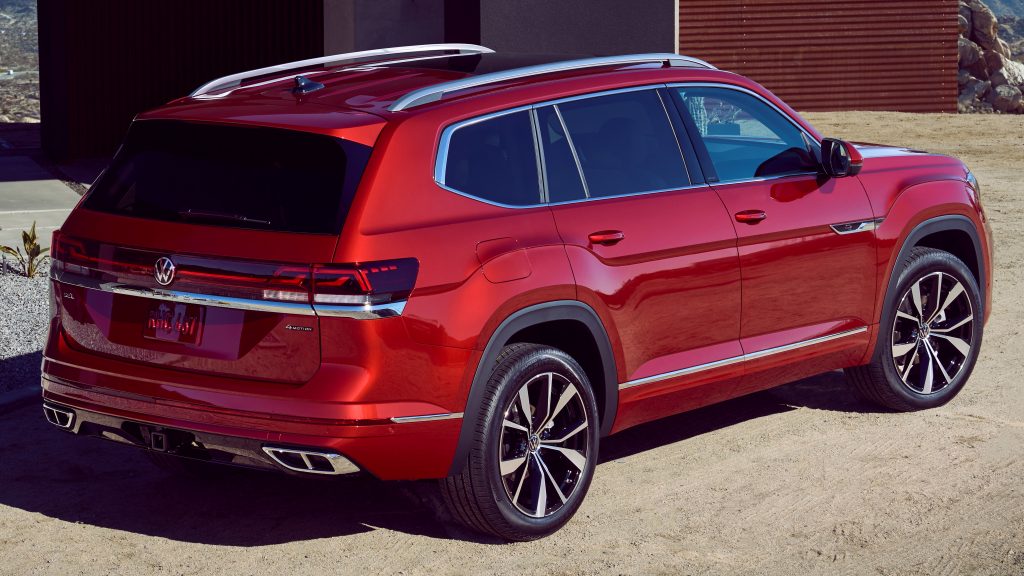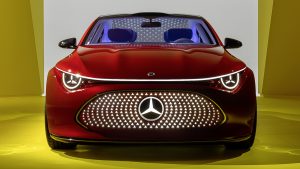The all-new GX and TX are both luxury SUVs with three rows. However, Lexus made sure to use all the variables to give each one an impressively distinct image. Let’s check them out
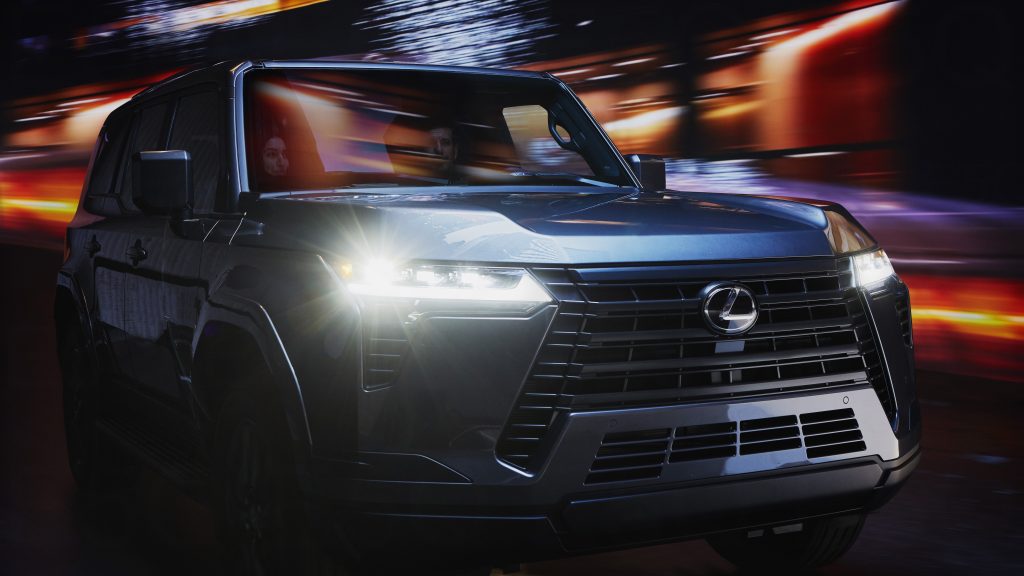
- Lexus has released two midsize SUVs in the US these days: the GX and the TX
- While they have similar content, their external designs are perfectly opposite
- Here, we are going to analyze the differences between each model’s design
I know, I know. Car fans are all tired of SUVs. Some of them criticize this body style for characteristics such as emotionless handling, heavy weight, and poor aerodynamics. But we all agree that they exist just too much. Carmakers are obsessed with finding market niches they have not filled yet, as small as they might be. Lexus is the latest one to engage in that: it has released not one, but two three row SUVs.
Both the GX and TX are all new for 2024. As usual, both are related to Toyota SUVs: the GX will spawn the next Land Cruiser Prado soon, while the TX’s cousin (Grand Highlander) is already on sale. But we can say their similarities end here. There are many variables to set when creating cars, and they are what makes them unique. Lexus’s job becomes even more impressive considering how crowded the SUV segment is.
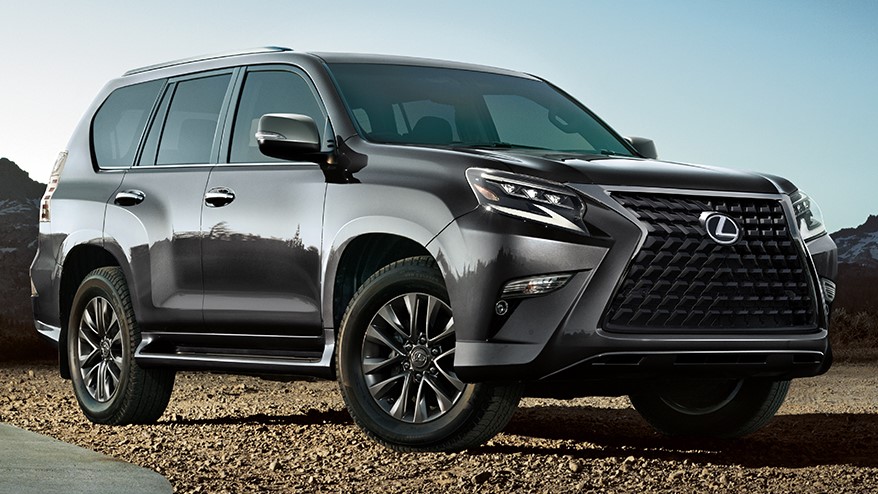
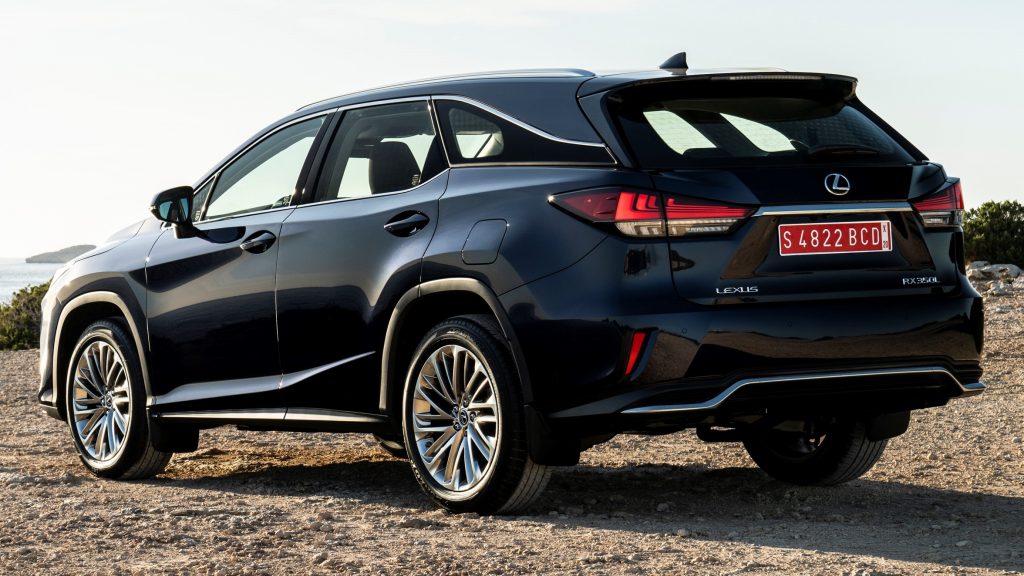
SUVs with three rows
We once wrote that there are so many SUVs on sale that they are no longer only one segment. Three row SUVs, for example, have become a strong subdivision. That number of seats naturally imposes a spacious cabin and a long body. Since big families are the target audience, those SUVs usually bring a smooth ride with minimal off-road potential. We have also written that they are the spiritual successors of minivans.
Lexus had two models in that niche, but both were problematic. The RX-L stretched the two-row variation with minimal visual harm, but that came at the expense of minimal space at the third row. The GX, in turn, was turning 14 years old; that is twice the average for modern cars. Both SUVs were lagging at a segment where you can find global references such as Jeep Grand Cherokee and BMW X5. It was time to change.

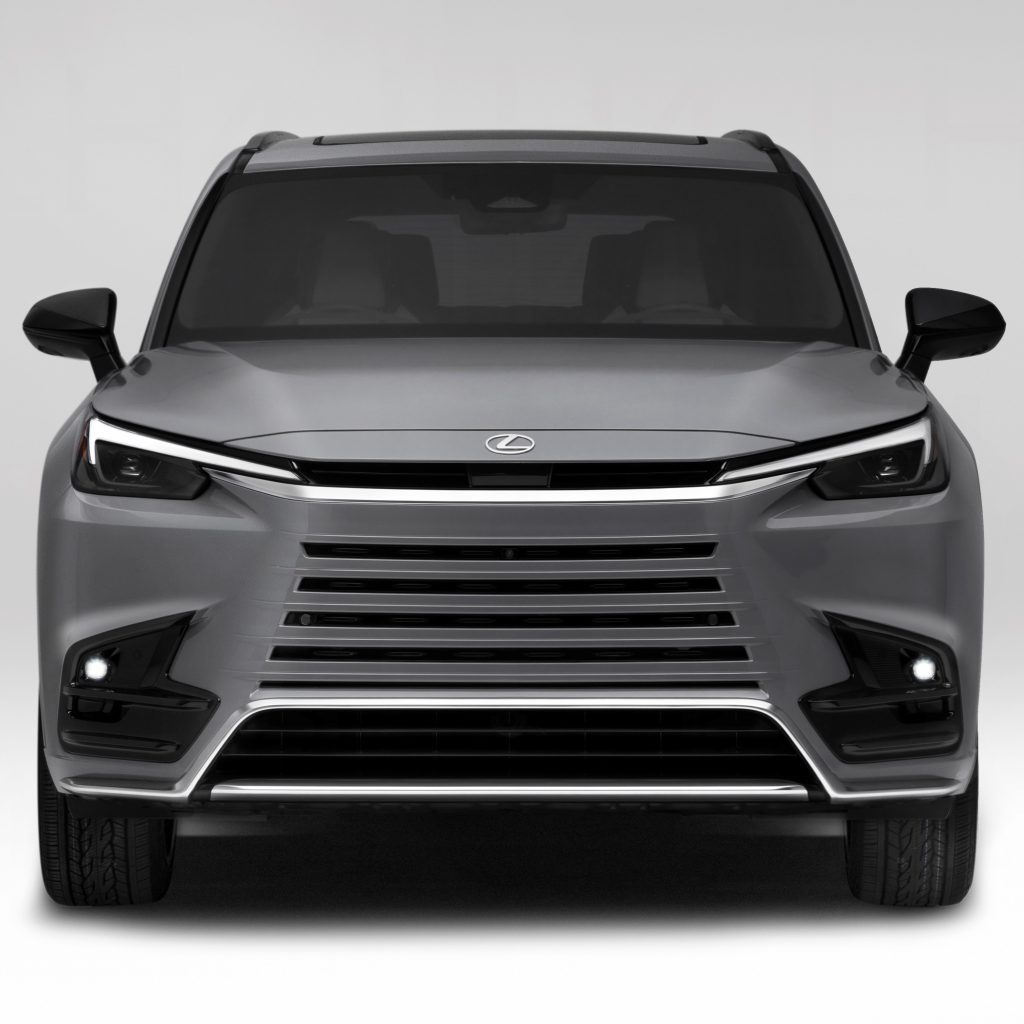
Lexus 3 row SUVs
The GX received the complete revamp it needed so badly. It borrows the LX’s body-on-frame construction and sophisticated suspension and AWD systems so as to deliver serious off-road potential. And that gets only better with its new Overtrail trim, which adds 33″ tires, rear locking differential, and skid plates. The TX is a typical luxury three row SUV with fancy trim, lots of equipment, and a silent and comfortable ride.
Now, none of those is better than the other. Lexus knows there are (many) buyers for both and it is right to cater to them. And that, in fact, is the object of this article. The automaker did such a great job catering to each audience individually that those models have countless differences. And, as we wrote above, that is even more impressive considering they belong to the same subdivision of such a crowded segment.
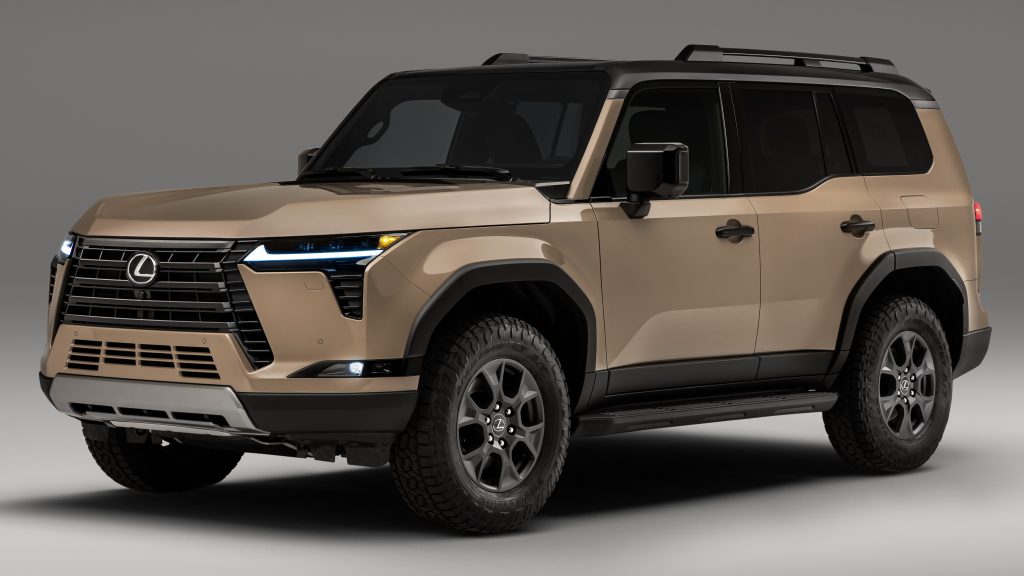

Front fascia design
The GX is old-school in two ways. One is the blocky design with a tall front and horizontal hood. It evokes typical North American SUVs of yore such as the Dodge Ramcharger and the Ford Bronco. The other way is that it follows Lexus’s own traditions as well, as young as they are. You can see that on those L-shaped headlights and on the prominent spindle grille, which caused so much controversy in the past decade.
When it comes to the TX, there are smoother lines and rounder edges. Angular shapes are still there, as in most Asian cars. But this Lexus stands out for having the most discreet version of the spindle grille shown so far. The most likely reason for that is trying to boost its sales by minimizing design controversy. On the other hand, that design makes it generic in the realm of SUVs and too similar to other Lexus and Toyotas.
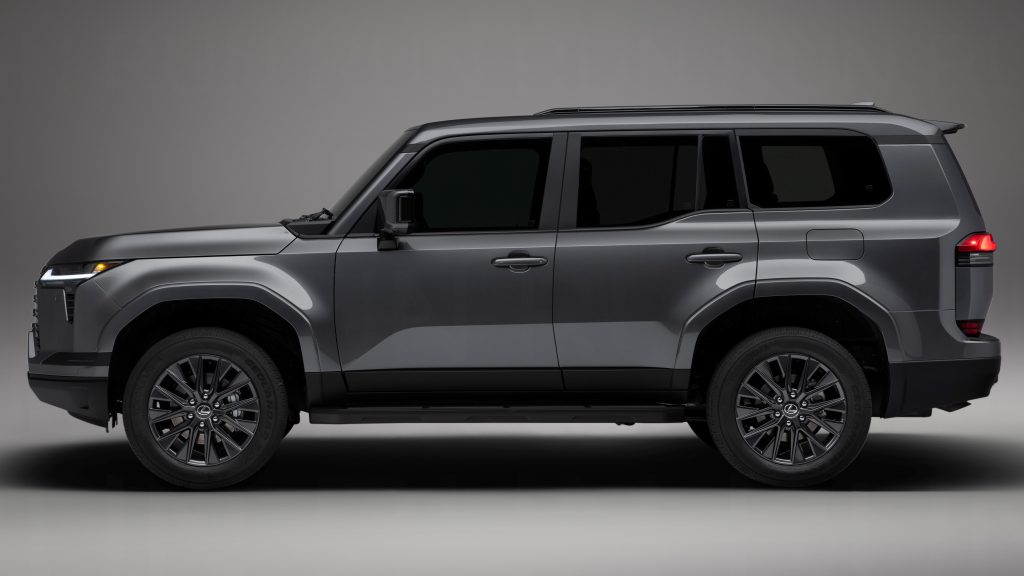

Side profile
Their differences are more evident here. The GX uses upright windshield, polygonal fenders, and muscular creases that make it imposing and boxy. On the other hand, the TX carries on with that smooth and fluid design. The voluminous front end reinforces that SUV stance, but the whole appearance makes us think of a tall station wagon. Both have the roof in a contrasting color, but the TX may paint the D-pillars as well.
Now, Lexus’s goal of making the GX rugged and adventurous brought an interesting result. That elevated window baseline, those thick fender creases, those short doors, everything makes it shorter than it truly is. The TX, in turn, has smooth and round shapes that give it more volume. Depending on the angle, it looks larger than the GX. That is an effective resource to make one SUV look sporty and the other look classy.

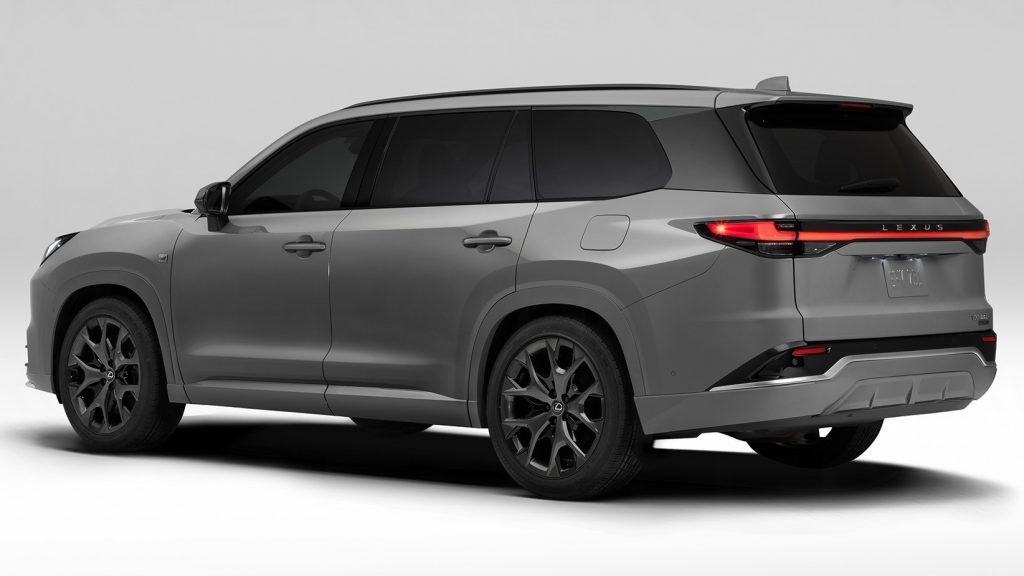
3 row SUVs from the rear
Here, Lexus did a great job at stretching its visual identity to fit such different profiles. Both use full-width taillights, a black strip with the company name on top and a second one below, and the license plate on the trunk lid. But those items have been used to build two rear styles that bear no resemblance with one another. Here, that boxy silhouette makes the GX look as massive as its position in the lineup allows it.
There are exclusive items inside as well, of course, but the separation is not so intense. Both dashboards, for example, use Lexus’s latest infotainment system, so they look quite similar. And when it comes to the powertrain, they differ mostly because of their base projects than because of any desire to build a unique image for each SUV model. Inside, both the GX and the TX follow the three row SUV recipe to their best.

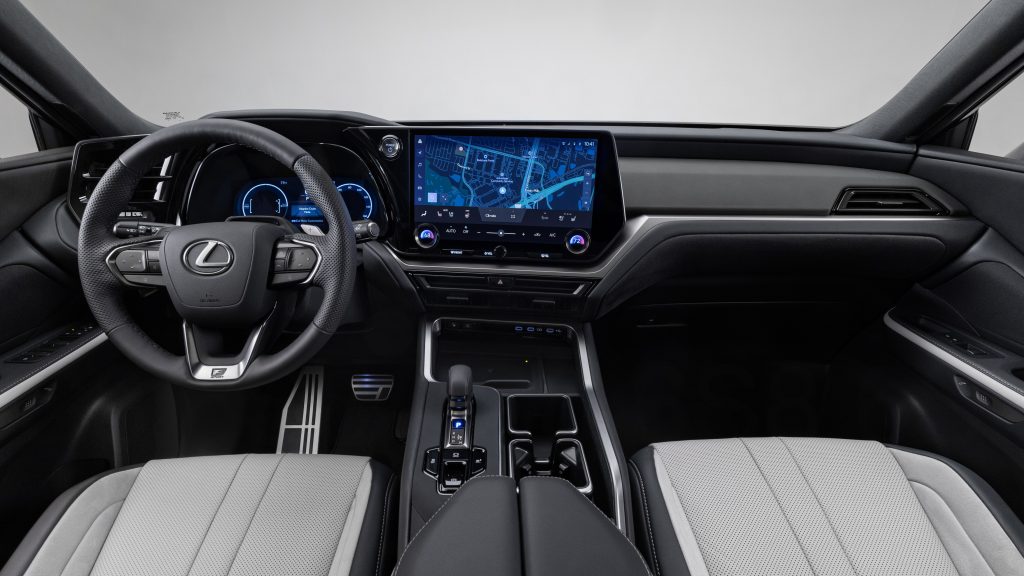
Why is all that important?
We all know there are too many cars in the market. Each big automaker has around a dozen to offer, and each model often comes in multiple versions. The industry groups car models in segments to coordinate that offering a little bit, but their competition is still fierce. A strong image can make that specific car “just perfect” for some of its target buyers. Emotional interest like that is an effective way to close that deal.
Here, we are talking about two SUVs with three rows. Both are made by Lexus for the luxury market in the midsize segment. But the GX is suitable for outdoorsy families who enjoy interacting with nature; it even has an Overtrail trim level with extra items for that use. Now, if your family prefers the urban environment and you would appreciate higher fuel efficiency, the TX will be a much better option for several reasons.
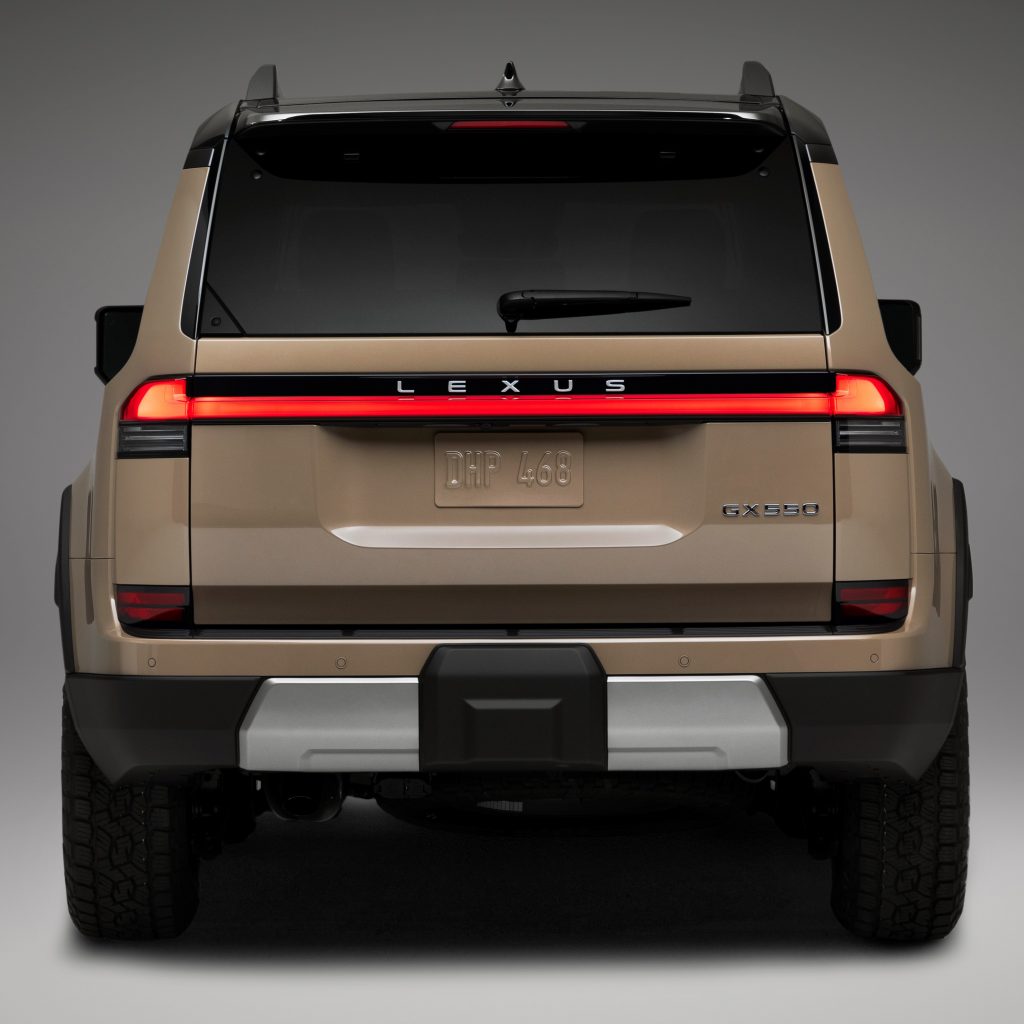
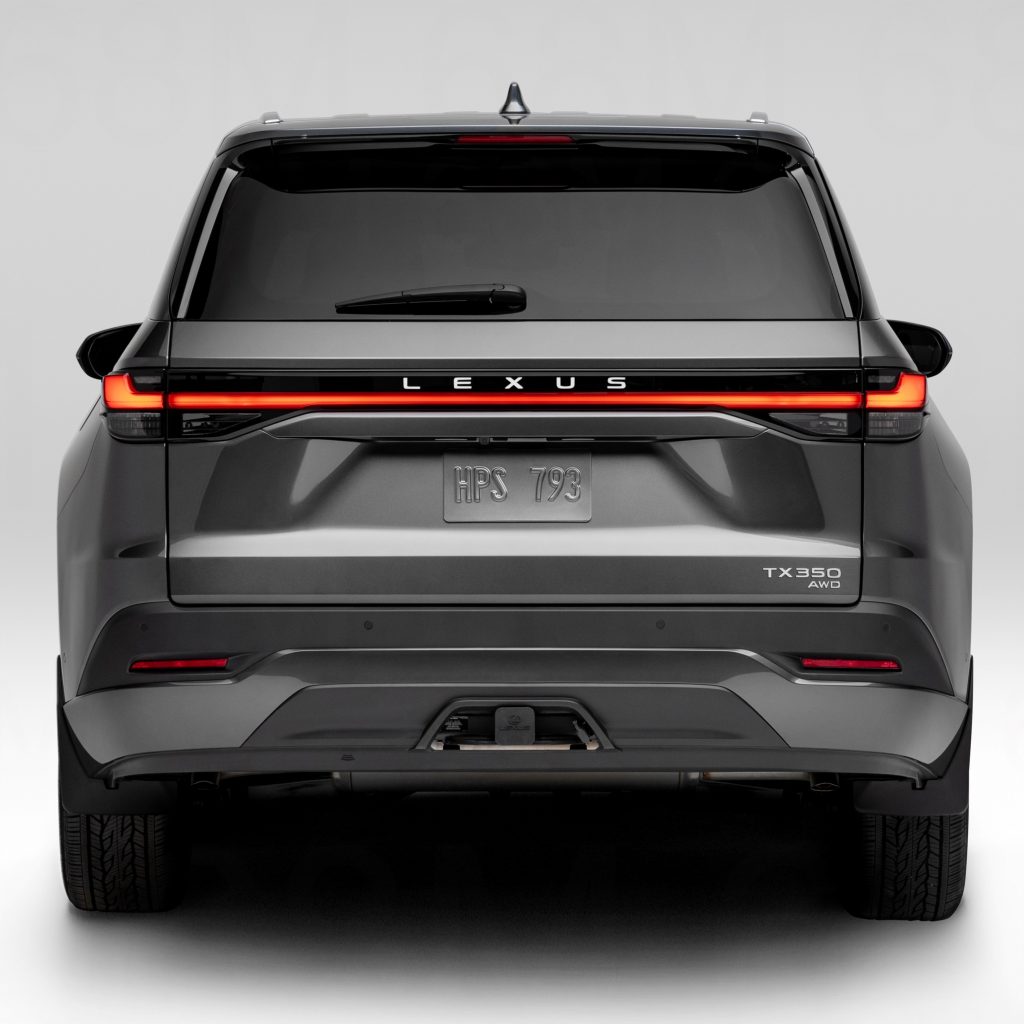
This article aims to hone your skills when it comes to car design. Modern cars have countless standards to comply with, but that does not mean they have become the same. Lexus’s case is a good example of that: the company made an admirable effort to build unique images for each one. Noticing elements like those is a great step for you, as a consumer, to effectively find the car that best suits your needs and wishes.
You may also like
There are so many SUVs on sale that the segment has become hard to understand. Check out our article about the subdivisions of the hottest category of the global market!
Danillo Almeida has explored his passion for cars in two distinct ways. The first one is his graduation course in Mechanical Engineering, which will hopefully lead to a job position in the field. The other one is expressing his knowledge and opinions on the matter through writing. Almeida has already contributed to blogs, stores, and websites in general writing automotive content in many formats.

